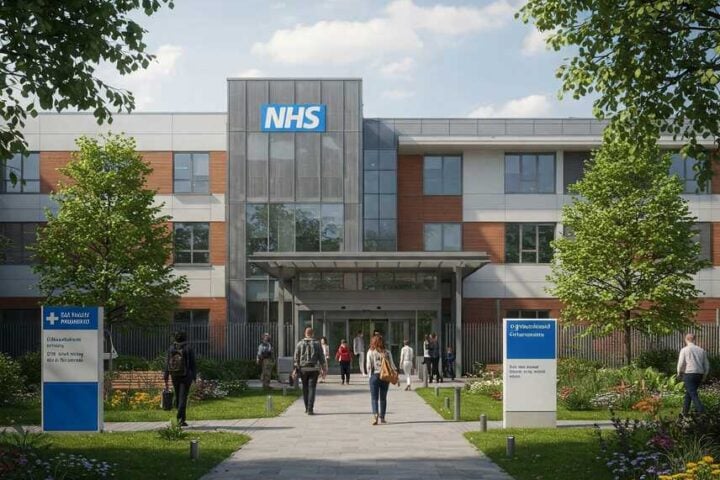Different races and ethnicities now have access to different air quality, particularly in areas near highways and industrial areas. The first national trends in exposure to nitrogen dioxide and fine particle pollution at American public schools are reported in a recent study. As per the recent study American public schools face higher air pollution, where mostly kids from marginalized communities’ study.
The study discovered that schools are situated in locations with higher concentrations of the pollutants on both a national and local level as compared to schools with fewer kids of colour and students who get free or reduced-price lunches, a proxy for poverty. The study was published in GeoHealth, the AGU publication for research that examines the interaction of human and planetary health for a sustainable future. It was led by members of NASA’s Health and Air Quality Applied Science team.
“School kids are a really vulnerable population,” mentioned Michael Cheeseman, an atmospheric scientist at Colorado State University and lead author of the new study. “They’re really sensitive to air pollution, and they spend a lot of their time at school.” The study examined the distribution of two pollutants, nitrogen dioxide and particulate matter with a diameter of 2.5 microns or less (PM2.5), affecting the racial or ethnic identification and socioeconomic status of the students. Short-term irritation from PM2.5 can escalate long-term illnesses including asthma and heart disease. Additionally, nitrogen dioxide can either cause or exacerbate respiratory ailments. Both pollutants carry a risk of increased hospitalization or mortality with long-term exposure. With recent studies proposing direct connection with lung cancer and air pollution, higher air pollution affecting younger students can be a pressing matter.
Children in the United States attend school 180 days out of the year, for a total of almost 7 hours each day on average. Studies have shown that exposure to air pollution may harm children’s health, including their capacity to study, grow their brains, and maintain healthy lungs. School-aged children are still developing as well, Cheeseman added.
The study made use of already-existing datasets* on student populations across the contiguous United States and satellite-derived concentrations of the pollutants from 2017 through 2019, with pollutant estimates confirmed by long-standing EPA monitoring networks. Due to the prevalence of low-income schools being situated close to busy roads, one of the pollutant models explicitly takes traffic-related nitrogen dioxide into account. The contaminants represent outdoor air pollution rather than indoor air pollution in school buildings.
Cheeseman said “The biggest takeaway is that schools with higher proportions of students in racial or ethnic minorities, or that have higher poverty levels, tend to be associated with higher concentrations of PM2.5 and nitrogen dioxide,”. He continues ahead, “These disparities exist from the national and state level even to local levels, with discrepancies and segregation within one city.”
Region-Wise Differences In Air Pollution Exposure
Peak NO2 and PM2.5 concentrations were roughly 30% higher in schools where a higher number of minority students attended. Schools with more than 80% of children eligible for free or reduced meals faced the greatest levels of nitrogen dioxide and PM2.5. The results are in line with other research that looked at pollution and schools on smaller settings, including school districts.
The researchers looked at how differences in air pollution between states and between urban and rural areas vary. They took into account how racial/ethnic diversity and poverty differed by state and urbanity to link pollution to population disparities. Because of their closeness to busy roadways, urban schools have higher nitrogen dioxide concentrations than rural schools. Due to low congestion and relative activities, nitrogen dioxide pollution levels in rural schools were frequently low, but PM2.5 exposure did not change much between rural and urban settings.
Pollution levels and racial disparities exist per region. For instance, Schools is southern states situated in more rural areas had higher African-American populations and were exposed to high NO2 & lesser PM2.5 pollutants.
Stronger disparities may occur for nitrogen dioxide than particulate pollution because nitrogen dioxide has a longer lifetime in the atmosphere, is more extensively dispersed, and is thus “smoothed out” across space and time, according to Cheeseman.
The study’s three main variables—race or ethnicity, poverty, and population density—are frequently linked and have an impact on one another. For instance, urban schools tend to have higher poverty rates and higher percentages of students from racial or ethnic minorities.
There are currently no mandatory federal regulations that prevent students from attending schools in highly polluted areas, the authors said, even though the EPA offers non-mandatory advice on how to pick an appropriate location for a new school.
“I do think more attention should be paid to this,” Cheeseman added. “Placing a new school is probably a balancing act too, though. If you place schools in less polluted areas that are maybe farther out, students might need to commute through heavily trafficked areas longer, and they could be exposed to more pollution from traffic that way.”


















